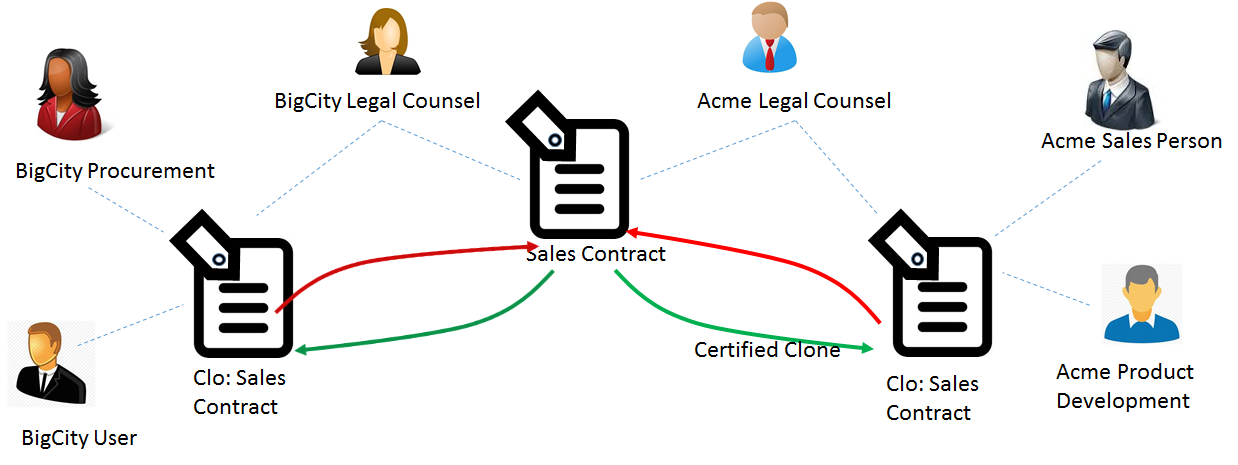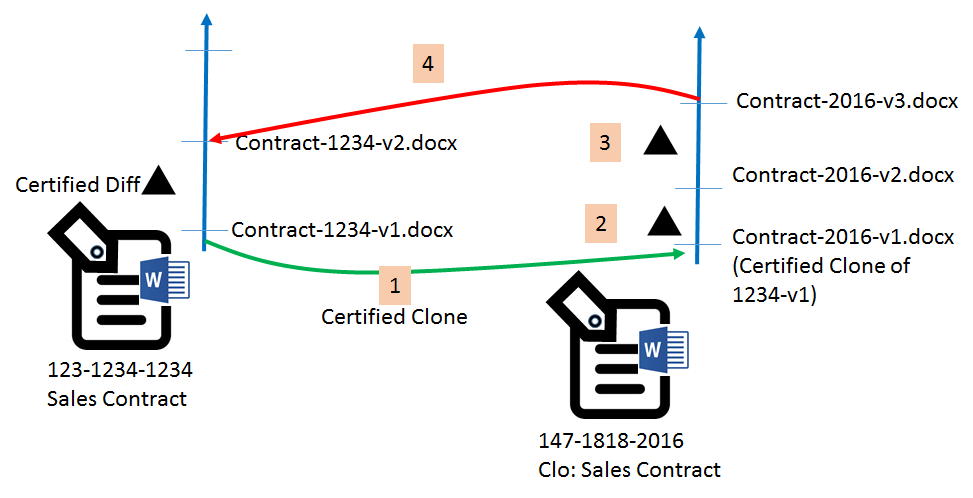Negotiate a Contract

Suggested Templates(s):
Capabilities Used: Tamper Proof Audit Trail, Certified Clone, File (Word) Section, Text Section, Globally Unique File Names, Certified Diffs, Section Versioning, Roles, Tracking Numbers.
Contract Negotiation is a critical process that most businesses need to undertake. Contracts are often negotiated in the form of Microsoft Word documents. However, the actual negotiation process is a mess of documents at different versions being sent back and forth. Change tracking is a critical capability in any contract negotiation process, but managing change tracking in a multi-round negotiation process is very difficult. Couple a multi-round negotiation process with changes coming from both one’s negotiating partner as well as one’s internal support and the whole affair becomes an exercise in frustration.
However, any company that can master the the contract negotiation process can gain a big competitive advantage. TMail makes multi-round, multi-party contract negotiations a breeze. Furthermore, it works seamlessly with Microsoft Word documents which are widely used in contract negotiations.
The figure above shows a Sales Contract being negotiated between Acme and BigCity. Notice that only the respective Legal Counsels are on this TMail. The Acme Legal Counsel makes a certified clone of the Sales Contract to produce another TMail, ‘Clo: Sales Contract’. He adds the Acme Sales Person and Acme Product Development to this TMail. On this TMail, they can discuss strategy as well as make suggested changes to the Sales Contract. The figure below shows this process in more detail.
Because the clone is a certified clone, all the users on the ‘Clo: Sales Contract’ can be assured that v1 of this TMail is the same as v1 of the ‘parent’ TMail (‘Sales Contract’). This is important since not all users on the clone have access to the parent TMail. As the team makes changes to the clone, they advance it through version 2 and version 3. Along the way, they can easily produce ‘Certified Diffs’ (indicated by the black triangle) of the changes. A ‘Certified Diff’ differ from ‘Change Tracking’ in that it cannot be spoofed. This is critical for applications like this. Once the Acme Legal Counsel is satisfied with the changes, he can merge the changes into the main TMail to produce v2 of the Contract in the main TMail. He could just as easily discuss proposed changes before making them ‘official’ by adding the changes as an attachment (with change tracking on) in the Main TMail instead of updating the File Section.
The above describes a single round of negotiation. Additional rounds are easily enabled by creating new certified clones from later version numbers of the main TMail. In this way, the participants can easily perform a multi-round negotiation. At each round it is easy to privately incorporate inputs from one’s team members. Furthermore, at all times the system makes certified diffs available so that all parties can see the true change from one round to the next. Finally once the contract is finalized it can easily be agreed to on the Main TMail.
Because the Main TMail has a unique tracking number (123-1234-1234), subsequent artifacts such as Purchase Orders, Invoices, Disputes, Shipments, Receipts, Subsequent Contract Revisions and other contract execution artifacts can easily reference this Contract. Additionally, at any time, Contract documents can be downloaded with globally unique names for archival.





